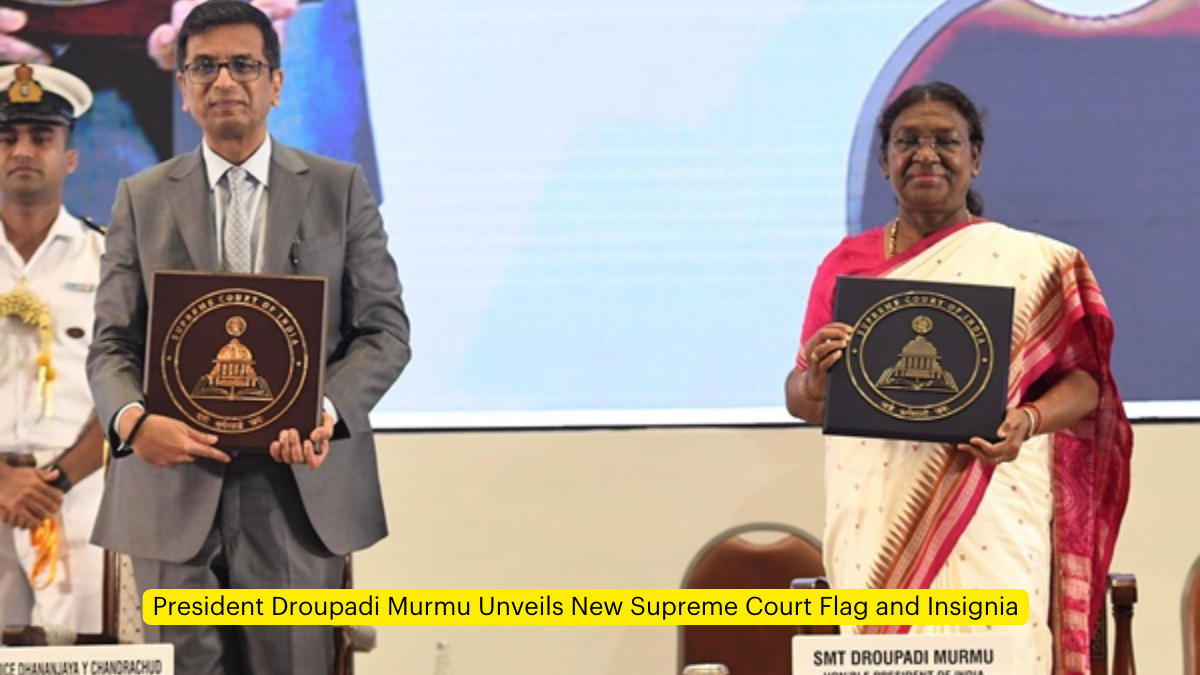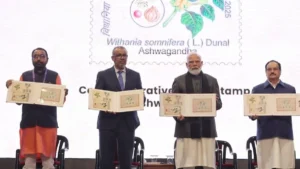In a significant event marking the evolution of India’s judiciary, President Droupadi Murmu unveiled the new flag and insignia of the Supreme Court of India during the two-day National Conference of District Judiciary held in New Delhi. The ceremony, attended by members of the judiciary from across the nation, symbolized the rich cultural and legal heritage of India, encapsulated in the newly designed symbols of the highest court.
The New Supreme Court Flag: A Blend of Tradition and Authority
The newly unveiled Supreme Court flag is a profound representation of India’s judicial and cultural values. The flag is blue in color, signifying trust, wisdom, and justice, and it features key symbols central to India’s identity. These include the Ashoka Chakra, which stands for the eternal wheel of law; the Supreme Court building, symbolizing the authority and integrity of the judiciary; and the Constitution of India, which is the bedrock of the nation’s legal framework.
These elements collectively highlight the Supreme Court’s role as the guardian of the Constitution and the protector of justice in India. The flag is not merely a symbol but a reflection of the ideals that guide the Indian judiciary in its quest to uphold justice.
The Insignia: Emblem of Righteousness and Victory
Alongside the flag, the new Supreme Court insignia was also unveiled. It bears the words “Supreme Court of India” and the Sanskrit phrase “Yato Dharmastato Jayah” inscribed in Devanagari script. This phrase translates to “Where there is Dharma, there is victory” or “Victory lies where Dharma (righteousness) prevails.” The choice of this ancient Sanskrit expression emphasizes the Supreme Court’s commitment to ensuring that justice and righteousness prevail in all its decisions. It serves as a reminder that the true measure of justice is not power or authority but the adherence to Dharma, or righteousness.
President Murmu’s Vision for a Localized Justice System
In her speech during the unveiling ceremony, President Murmu proposed a visionary idea aimed at bringing the judiciary closer to the people. She suggested the establishment of a justice system at the local level, inspired by the decentralized powers and responsibilities given to Panchayats and Municipalities by the Constitution. According to the President, administering justice in local languages and under local conditions could significantly enhance accessibility and understanding of the judicial process for ordinary citizens. This approach, she argued, would make the judiciary more responsive to the unique needs and circumstances of local communities.
Call for Judicial Collaboration and Reforms
President Murmu highlighted the importance of collaboration among the judiciary, government, and police to effectively address challenges within the justice system. She particularly stressed the need to improve evidence handling and witness protection mechanisms, which are critical in ensuring fair and timely justice.
The President expressed deep concern over the delays in justice delivery, particularly in cases of heinous crimes like rape, where prolonged trials can severely erode public confidence in the judicial system. She pointed out that in some cases, individuals with significant resources manage to evade justice, continuing to live freely and fearlessly despite their crimes. In contrast, their victims often live in fear, as if they were the ones guilty. This, she noted, is a tragic and unacceptable aspect of social life that needs urgent redressal to restore faith in the judicial process.




 Parliament Approves Sabka Bima Sabki Rak...
Parliament Approves Sabka Bima Sabki Rak...
 VB-G RAM G Bill, 2025 Receives President...
VB-G RAM G Bill, 2025 Receives President...
 Prime Minister Releases Commemorative Po...
Prime Minister Releases Commemorative Po...







